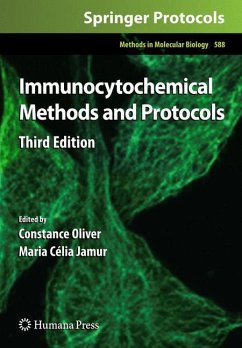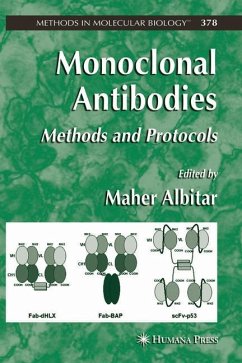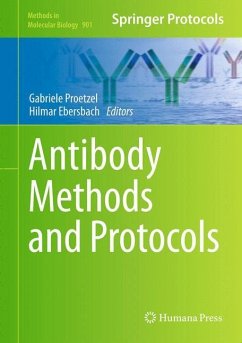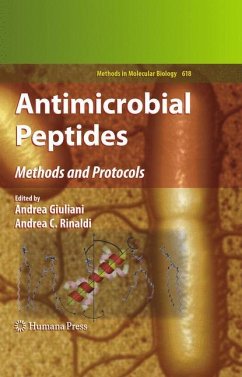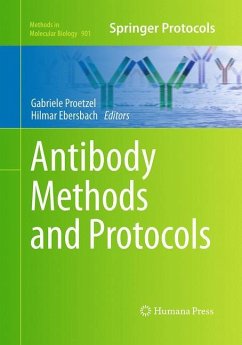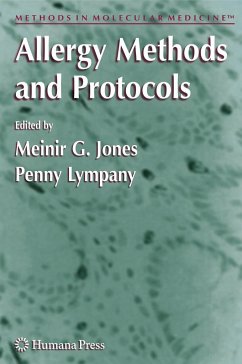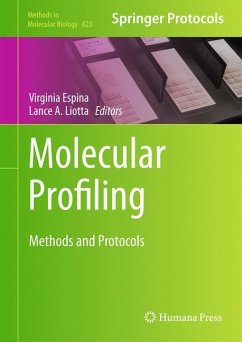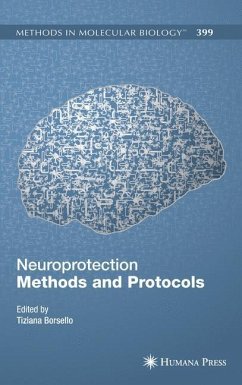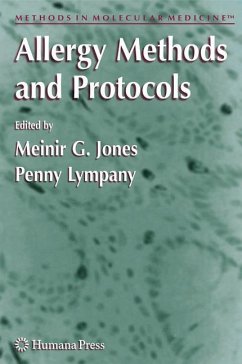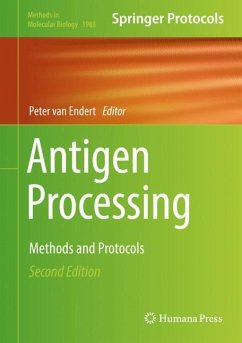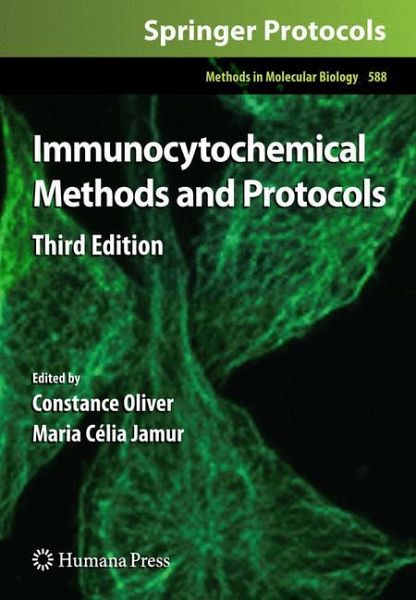
Immunocytochemical Methods and Protocols

PAYBACK Punkte
38 °P sammeln!
The landscape of immunocytochemistry has significantly evolved in past years. Once a laborious technique with limited application, the introduction of new detection systems and instrumentation has facilitated the widespread use of immunocytochemical methods. In the post-genomic era, the use of immunocytochemical methods has grown to include the identification of a broad spectrum of antigens including proteins, carbohydrates and lipids from virtually every organism. In Immunocytochemical Methods and Protocols, Third Edition, expert researchers explore the modern methods employed in the field today, now widely used to identify, in situ, various components of cells and tissues in both normal and pathological conditions, and to demonstrate the localization of subcellular components. Chapters provide methods that are designed to be general in their application and to appeal to investigators across all disciplines, including those in research and clinical settings. Composed in the highly successful Methods in Molecular Biology(TM) series format, chapters contain a brief introduction, step-by-step methods, a list of necessary materials, and a Notes section which shares tips on troubleshooting and avoiding known pitfalls.
Comprehensive and ground-breaking, Immunocytochemical Methods and Protocols, Third Edition, brings together a variety of methods that are normally limited to applications in a specific area, providing a unique and vital guide for researchers and clinicians alike.
Comprehensive and ground-breaking, Immunocytochemical Methods and Protocols, Third Edition, brings together a variety of methods that are normally limited to applications in a specific area, providing a unique and vital guide for researchers and clinicians alike.
Antibodies tagged with fuorescent markers have been used in histochemistry for over 50 years. Although early applications were focused on the detection of microbial antigens in tissues, the use of immunocytochemical methods now has spread to include the det- tion of a wide array of antigens including proteins, carbohydrates, and lipids from virtually any organism. Today, immunohistochemistry is widely used to identify, in situ, various components of cells and tissues in both normal and pathological conditions. The method gains its strength from the extremely sensitive interaction of a specifc antibody with its antigen. For some scientifc areas, books have been published on applications of immu- cytochemical techniques specifc to that area. What distinguished Immunocytochemical Methods and Protocols from earlier books when it was frst published was its broad appeal to investigators across all disciplines, including those in both research and clinical settings. The methods and protocols p- sented in the frst edition were designed to be general in their application; the accompa- ing "Notes" provided the reader with invaluable assistance in adapting or troubleshooting the protocols. These strengths continued to hold true for the second edition and again for the third edition. Since the publication of the frst edition, the application of immuno- tochemical techniques in the clinical laboratory has continued to rise and this third edition provides methods that are applicable to basic research as well as to the clinical laboratory.





